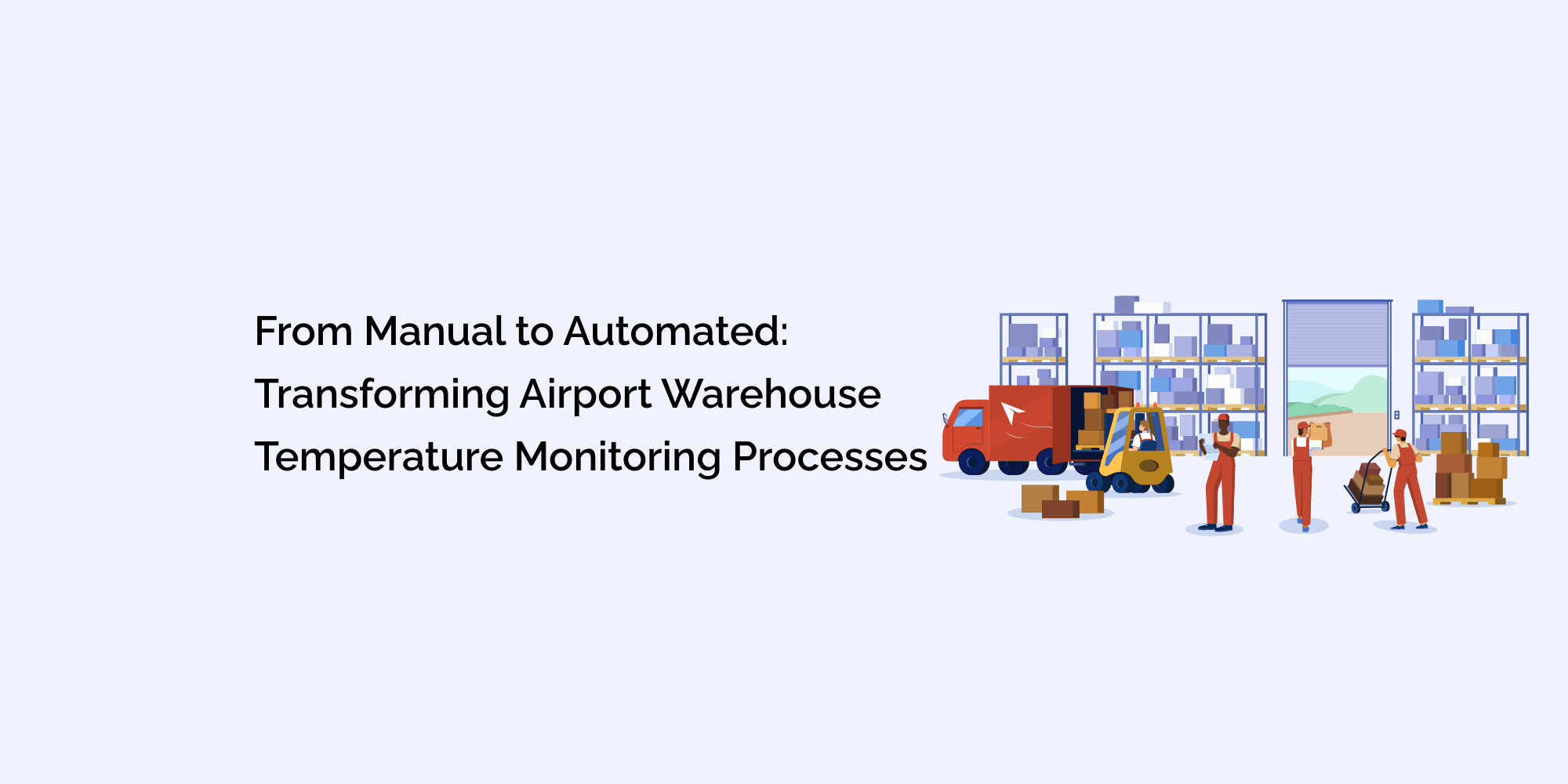In the fast-paced world of airport logistics, efficient warehouse operations play a pivotal role in ensuring the seamless flow of goods. One critical aspect that significantly impacts the quality and safety of cargo is temperature control.
Temperature-sensitive items, such as pharmaceuticals, perishable goods, and electronics, require precise handling and storage conditions to prevent spoilage and maintain their integrity.
Traditionally, airport warehouses relied on manual temperature monitoring processes, which were time-consuming, prone to human error, and lacked real-time insights. However, with advancements in technology, the industry is undergoing a significant transformation as it shifts from manual to automated temperature monitoring processes.
In this blog, we will explore the benefits and implementation of automated temperature monitoring systems in airport warehouses, revolutionizing the way temperature-sensitive cargo is handled.
1. Understanding the Limitations of Manual Temperature Monitoring:
Manual temperature monitoring has been a standard practice in airport warehouses for decades. However, this section will shed light on the limitations of this approach, including human errors in recording and interpreting data, lack of real-time visibility, and the potential risks posed to temperature-sensitive goods.
2. The Emergence of Automated Temperature Monitoring:
Advancements in technology have paved the way for automated temperature monitoring systems that offer a myriad of benefits. This section will discuss the evolution of automated temperature monitoring solutions and how they have transformed warehouse operations in the aviation industry.
3. The Advantages of Automated Temperature Monitoring:
a) Real-time Data and Insights: Automated temperature monitoring systems provide real-time data on temperature conditions, enabling warehouse operators to proactively identify issues and make informed decisions promptly.
b) Enhanced Accuracy and Reliability: By eliminating human error, automated systems ensure that temperature readings are precise and reliable, reducing the risk of cargo spoilage and damage.
c) Compliance and Reporting: Automated systems facilitate compliance with industry regulations and enable easy generation of comprehensive reports for audits and quality assurance.
d) Remote Monitoring and Alerts: With automated systems, warehouse staff can remotely monitor temperature conditions and receive instant alerts in case of deviations, enabling timely interventions.
4. Types of Automated Temperature Monitoring Solutions:
There are various types of automated temperature monitoring systems available in the market, each offering unique features and functionalities. This section will explore different options, such as wireless sensors, cloud-based platforms, and integrated IoT solutions, and discuss their suitability for specific warehouse requirements.
5. Key Considerations for Implementing Automated Temperature Monitoring:
Successfully transitioning from manual to automated temperature monitoring requires careful planning and considerations. This section will cover important aspects, including system compatibility, data integration with existing warehouse management systems (WMS), staff training, and data security.
6. Overcoming Challenges in Implementation:
Despite the numerous advantages, the implementation of automated temperature monitoring systems may face challenges. This section will address potential obstacles, such as initial costs, technical complexities, and resistance to change, and propose strategies to overcome them.
7. Case Studies:
To understand the tangible impact of automated temperature monitoring, this section will present real-life case studies of airports that have successfully made the transition. These case studies will highlight the improvements achieved in warehouse efficiency, cargo quality, and overall supply chain resilience.
8. Future Trends in Automated Temperature Monitoring:
As technology continues to advance, the future of automated temperature monitoring looks promising. This section will explore potential trends and innovations, such as AI-driven analytics, predictive maintenance, and blockchain integration, and discuss how these developments will further optimize warehouse operations.
Conclusion:
The shift from manual to automated temperature monitoring marks a significant milestone in the evolution of airport warehouse operations. By embracing automated solutions, airports can enhance the accuracy, efficiency, and resilience of their supply chains, ensuring the safe and timely delivery of temperature-sensitive goods.
With real-time insights, remote monitoring capabilities, and streamlined compliance processes, automated temperature monitoring has become an indispensable tool for modern airport warehouses. As the industry continues to embrace automation, the future holds exciting possibilities for further advancements, propelling airport logistics into a new era of efficiency and effectiveness.








